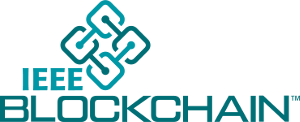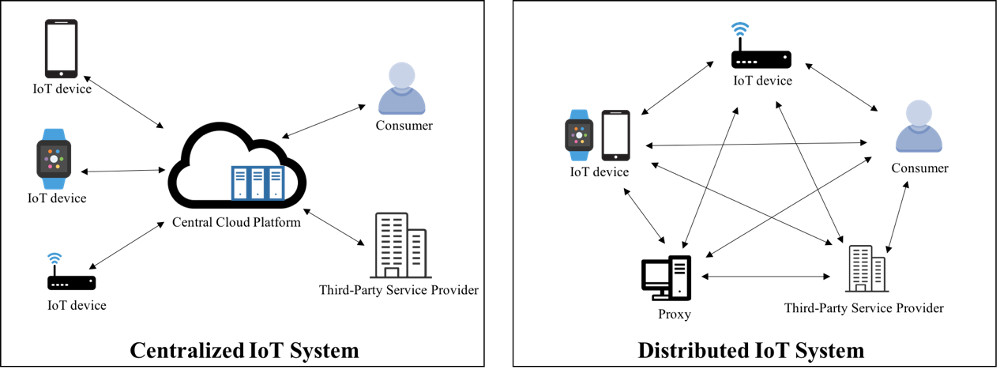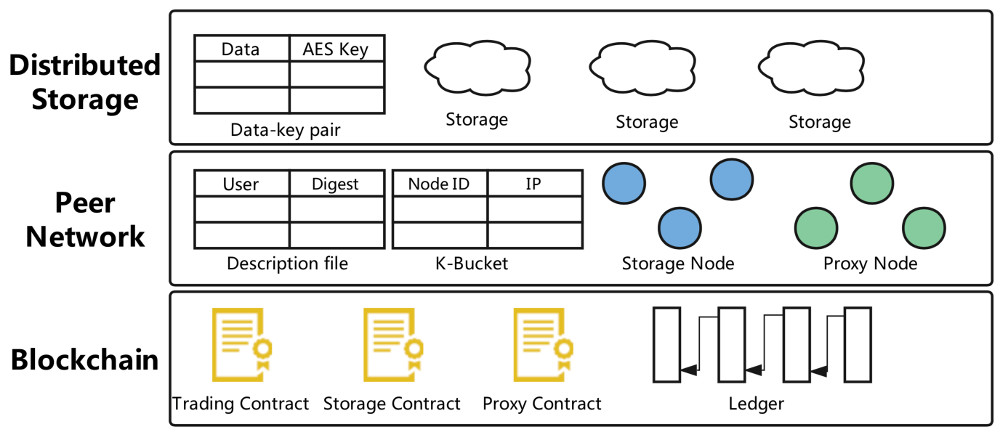Enabling Distributed and Trusted IoT Systems with Blockchain Technology
Lijun Wei, Shaowei Liu, Jing Wu, and Chengnian Long, Department of Automation, Shanghai Jiao Tong University, and Key Laboratory of System Control and Information Processing, Ministry of China; Shiyao Ma and Bo Li, Department of Computer Science and Engineering, Hong Kong University of Science and Technology
IEEE Blockchain Technical Briefs, January 2019
Discuss this topic on IEEE Collabratec
Internet of Things (IoT) [1] has undergone a major development in recent years, and it poses a unique opportunity with great potential in many application scenarios. It integrates advanced information, computing, communications, and sensing technologies to establish a global and dynamic network infrastructure, in which a variety of smart objects (RFID tags, sensors, smartphones, wearable devices, and etc.) are interconnected. Information and data are collected, shared and distributed for full awareness, reliable delivery and intelligent processing. Currently, the IoT has largely adopted centralized operation mode in the fields of intelligent transportation, smart home and medical care, often referred as the "chimney" IoT architecture. This encounters problems concerning communication costs, trust, data value and privacy. Specifically, the current IoT ecosystem [2] relies on a centralized platform (figure 1), which essentially serves as a control center for device connection and information management. All users need to connect to the control center or/and central cloud to join the ecosystem. However, with the dramatic growing scale of the IoT, this architecture suffers from high connectivity costs and increased maintenance costs. Moreover, centralized systems are vulnerable to targeted attacks by adversaries with network expansions.
Figure 1. Centralized IoT system vs. Distributed IoT system
Blockchain [3][4], as an emerging technology, has shown great potential in overcoming data security and privacy problems. There have been increased interests in both academia and industry, partly evident from the introduction of blockchain technology into more fields such as finance, smart city, transportation, medical and entertainment sectors. Among them, the combination of the Internet of Things and the blockchain technology is perhaps one of the most promising directions [5]. The key concept of blockchain technology is a distributed ledger, that is, an open, distributed database maintained by multiple parties. Conceptually, based on blockchain, we can build a decentralized and basic data platform for IoT system, which can effectively mitigate problems associated with high access and communication costs. In addition, a decentralized architecture is more resistant to single point of failure. As nodes are completely anonymous in blockchain system, privacy and security are better ensured. In conclusion, we believe that blockchain technology is positioned to reshape the IoT infrastructure and can overcome a series of challenges in the current centralized "chimney" system.
However, the state-of-the-art blockchain technology is unable to meet all IoT requirements in terms of real-time and security. The problems lie in the prohibitively high cost in both storage and computations incurred, and the inefficiency in the current consensus protocols. As a result, this often leads to poor throughput in large-scale systems. In order to overcome the problems in blockchain-driven IoT systems, there are several directions that are worth being explored in terms of viability, scalability, reliability and data management:
- Parallel Distributed Encrypted Storage and Computation. Synchronization techniques commonly used in an Ethereum or Bitcoin requires enormous amount of storage space, which is not applicable for memory-limited IoT devices. The parallel distributed architecture [6] that separates data layer from control layer using blockchain can greatly improve system scalability without changing block capacity. InterPlanetary File System (IPFS) [7], Storj [8] and Filecoin [9] can further help mitigating the storage problem in the data layer, since each consumes less storage space and enhances the scalability of the blockchain. The blockchain in parallel distributed architecture will act as a control channel to record the overall state of the IoT system (see Figure 2). With a parallel distributed architecture, more information can be packaged into a single block with the same block size, which can significantly improve the transaction processing speed.
Figure 2. Parallel Distributed Architecture for IoT Data Storage and Sharing [6]
- High-Speed Permissionless Consensus Protocol. In a large-scale blockchain system, given the system scale and the massive data generated by IoT applications, the realization of node state consistency and distributed data storage face many challenges. Nakamoto Consensus uses Proof of Work (PoW) to solve the consensus problem of permissionless blockchain system. Nevertheless, due to the restriction on puzzle difficulty and fork problem, system throughput is severely limited to 7 transactions/sec, and one transaction requires up to 10 minutes to be confirmed. Hybrid consensus [10] deploys a committee-based two-layer agreement to enhance consensus performance. Firstly, the system elects delegated nodes to form a committee. Then a consensus algorithm is designed to achieve high-speed and reliable blockchain maintenance.
- IoT Privacy and Security. The Internet needs to be built on trust, yet events such as Snowden strongly prove that "trusted third party" are not 100% trustworthy. Privacy has often been compromised since we enter the “Big Data” era. Therefore, privacy needs to be seamlessly integrated into the IoT infrastructure. Decentralization and anonymity are the first steps to protect privacy and ensure security. Cryptography algorithm, digital fingerprint technology and equipment anonymous access authentication will be the focuses of our future research, so as to protect the personalized information.
- Hierarchical Management of Heterogeneous Nodes. In order to ensure the stable and continuous operation of large-scale P2P network, we need to effectively manage all kinds of IoT nodes in a network. This requires that the network has a reliable assessment model [11]. Therefore, for the design of assessment model, it is more efficient to combine the traditional reputation assessment model [12] in P2P network and the global ledger of the blockchain, in order to achieve unified node assessment Moreover, Reputation model will help regulate the behavior of nodes in the network.
- Incentive for Collaboration. In a decentralized system, the node cooperation is of great importance and relevance. The cooperation between nodes can effectively improve the efficiency of the entire IoT system. Therefore, it is essential to design proper incentive mechanisms to facilitate node cooperation. In accordance with the characteristics of blockchain, we can use token reward mechanism [13][14] to encourage nodes to contribute their redundant resources. Moreover, token can also be used as a value medium in that the nodes can use their own tokens to request services or resources from other nodes in the network. It is noteworthy that the mechanism of token distribution needs more thorough examination.
In summary, blockchain technology has great potential in dealing with the privacy, security, cost, and trust issues existing in the current IoT systems. However, the integration of blockchain technology also brings many new challenges, such as data storage, scalability, efficiency, heterogeneous device management in P2P networks, etc. With many unsolved problems occurred in the combination of IoT and blockchain, our researches focus on the most important bottlenecks at present, aiming to overcome the two core issues in terms of efficiency and security.
References
[1] J. Gubbi, R. Buyya, S. Marusic, and M. Palaniswami, “Internet of Things (IoT): A vision, architectural elements, and future directions,” Future generation computer systems, vol. 29, no. 7, pp. 1645-1660, 2013.
[2] R. Roman, J. Zhou, J. Lopez, “On the features and challenges of security and privacy in distributed internet of things,” Computer Networks, vol. 57, no. 10, pp. 2266-2279, 2013.
[3] S. Nakamoto, “Bitcoin: A Peer-to-Peer Electronic Cash System,” 2008. [Online]. Available: http://bitcoin.org/bitcoin.pdf
[4] J. Garay, A. Kiayias, and N. Leonardos, “The bitcoin backbone protocol: Analysis and applications,” In Eurocrypt, 2015.
[5] A. Dorri, S. S. Kanhere, R. Jurdak, P. Gauravaram, “Blockchain for IoT security and privacy: The case study of a smart home,” In IEEE Percom workshop on security privacy and trust in the internet of thing, 2017.
[6] S. Liu, J. Wu, and C. Long, “IoT Meets Blockchain: Parallel Distributed
Architecture for Data Storage and Sharing,” The 2018 IEEE International Conference on Blockchain, 2018.
[7] J. Benet, “IPFS-content addressed, versioned, P2P file system,” arXiv preprint arXiv:1407.3561 (2014).
[8] S. Wilkinson, T. Boshevski and J. Brandoff, “Storj: a peer-to-peer cloud storage network,” 2014.
[9] Whitepaper, “Filecoin: A Decentralized Storage Network,” https://filecoin.io/filecoin.pdf, 2017.
[10] R. Pass, E. Shi, “Hybrid consensus: Efficient consensus in the permissionless model,” Cryptology ePrint Archive, Report 2016/917, 2016. http://eprint.iacr.org/.
[11] S. D. Kamvar, M. T. Schlosser, and H. Garcia-Molina, “The eigentrust algorithm for reputation management in p2p networks,” Proceedings of the 12th international conference on World Wide Web. ACM, 2003.
[12] M. Gupta, P. Judge, and M. Ammar, “A reputation system for peer-to-peer networks,” Proceedings of the 13th international workshop on Network and operating systems support for digital audio and video. ACM, 2003.
[13] J. M. Atthowe, “The token economy: Its utility and limitations,” Unpublished paper presented to the Western Psychological Association, Long Beach, California, 1966.
[14] A. E. Kazdin, “The token economy: A decade later,” Journal of Applied Behavior Analysis, vol. 15, no. 3, pp. 431-445, 1982.
 Lijun Wei received his Bachelor's degree in Automation from South China University of Technology, China, in 2016. He is currently working towards his Ph.D. degree in the School of Electronic Information and Electrical Engineering from Shanghai Jiao Tong University, China. His current research interests lie primarily in distributed consensus protocol, blockchain technology and IoT architecture.
Lijun Wei received his Bachelor's degree in Automation from South China University of Technology, China, in 2016. He is currently working towards his Ph.D. degree in the School of Electronic Information and Electrical Engineering from Shanghai Jiao Tong University, China. His current research interests lie primarily in distributed consensus protocol, blockchain technology and IoT architecture.
 Shaowei Liu received his B.Eng. degree from the school of Electronic Information and Electrical Engineering from Shanghai Jiao Tong University, China. He is currently working towards his master degree in the School of Electronic Information and Electrical Engineering from Shanghai Jiao Tong University, China. His current research interests include IoT and blockchain technology.
Shaowei Liu received his B.Eng. degree from the school of Electronic Information and Electrical Engineering from Shanghai Jiao Tong University, China. He is currently working towards his master degree in the School of Electronic Information and Electrical Engineering from Shanghai Jiao Tong University, China. His current research interests include IoT and blockchain technology.
 Jing Wu (M'08) received her B.S. degree from Nanchang University in 2000, M.S. degree from Yanshan University in 2002, and Ph.D. degree from University of Alberta in 2008, all in electrical engineering. Since 2011, she has been with Shanghai Jiao Tong University, Shanghai, China, and is currently an Associate Professor. Dr. Wu is a registered Professional Engineer in Alberta, Canada. Her current research interests include robust model predictive control, security control, and stability analysis and estimations for cyber-physical systems.
Jing Wu (M'08) received her B.S. degree from Nanchang University in 2000, M.S. degree from Yanshan University in 2002, and Ph.D. degree from University of Alberta in 2008, all in electrical engineering. Since 2011, she has been with Shanghai Jiao Tong University, Shanghai, China, and is currently an Associate Professor. Dr. Wu is a registered Professional Engineer in Alberta, Canada. Her current research interests include robust model predictive control, security control, and stability analysis and estimations for cyber-physical systems.
 Chengnian Long (M'07) received the B.S., M.S., and Ph.D. degrees from Yanshan University, China, in 1999, 2001, and 2004, respectively, all in control theory and engineering. He was a research associate in Department of Computer Science and Engineering, Hong Kong University of Science and Technology and a Killam postdoctoral fellow at University of Alberta, Canada. He has been with Shanghai Jiao Tong University in 2009, and is a full Professor since 2011. His current research interests include internet of things and blockchain technology, cyber-physical systems security, and smart wireless systems.
Chengnian Long (M'07) received the B.S., M.S., and Ph.D. degrees from Yanshan University, China, in 1999, 2001, and 2004, respectively, all in control theory and engineering. He was a research associate in Department of Computer Science and Engineering, Hong Kong University of Science and Technology and a Killam postdoctoral fellow at University of Alberta, Canada. He has been with Shanghai Jiao Tong University in 2009, and is a full Professor since 2011. His current research interests include internet of things and blockchain technology, cyber-physical systems security, and smart wireless systems.
 Shiyao Ma received his B.Eng. degree from the Department of Computer Science and Technology, Tsinghua University, in 2013, and Ph.D. degree from the Department of Computer Science and Engineering, Hong Kong University of Science and Technology, in 2018. His current research interests include blockchain technology, datacenter networking, and data-parallel task scheduling.
Shiyao Ma received his B.Eng. degree from the Department of Computer Science and Technology, Tsinghua University, in 2013, and Ph.D. degree from the Department of Computer Science and Engineering, Hong Kong University of Science and Technology, in 2018. His current research interests include blockchain technology, datacenter networking, and data-parallel task scheduling.
 Bo Li (M’92-SM’99-F’11) is a professor in the Department of Computer Science and Engineering, Hong Kong University of Science and Technology. He has been the Chief Technical Advisor for Chinacache Corp. (a NASDAQ listed company); the leading CDN operator in China since 2008. He held a Cheung Kong Visiting Chair Professor in Shanghai Jiao Tong University (2010-2013). He was an adjunct researcher at Microsoft Research Asia (1999-2007) and at Microsoft Advance Technology Center (2007- 2009). His current research interests include data-center networking, cloud computing, content distribution in the Internet, and mobile wireless networking.
Bo Li (M’92-SM’99-F’11) is a professor in the Department of Computer Science and Engineering, Hong Kong University of Science and Technology. He has been the Chief Technical Advisor for Chinacache Corp. (a NASDAQ listed company); the leading CDN operator in China since 2008. He held a Cheung Kong Visiting Chair Professor in Shanghai Jiao Tong University (2010-2013). He was an adjunct researcher at Microsoft Research Asia (1999-2007) and at Microsoft Advance Technology Center (2007- 2009). His current research interests include data-center networking, cloud computing, content distribution in the Internet, and mobile wireless networking.
He made pioneering contributions in the internet video broadcast with a system called Coolstreaming, which was credited as the first large-scale Peer-to-Peer live video streaming system in the world. This work received the inaugural The Test-of-Time Paper Award from IEEE INFOCOM (2015). He has been an editor or a guest editor for over a two dozen of journals and magazines, mostly in IEEE and ACM. He was the Co-TPC Chair for IEEE INFOCOM 2004.
He received six Best Paper Awards from IEEE. He received the Young Investigator Award from Natural Science Foundation of China (NSFC) in 2005, the State Natural Science Award (2nd Class) in 2011. He received his PhD in the Electrical and Computer Engineering from University of Massachusetts at Amherst, and his B. Eng. (summa cum laude) in the Computer Science from Tsinghua University, Beijing, China.
Editor:
 Zheng Yan is currently a full professor at the Xidian University, China and a visiting professor and Finnish academy research fellow at the Aalto University, Finland. She received the Doctor of Science in Technology from the Helsinki University of Technology, Finland. She authored and co-authored about 200 peer-reviewed articles, 8 conference proceedings and solely authored two books. She is an inventor of 60+ granted patents and PCT patents, all of them were adopted or purchased by industry. Some of her granted patents are applied in international standards. She has given 20 keynotes and invited talks in international conferences and universities. Her research interests are in trust, security and privacy; data mining; mobile applications and services; social networking and cloud computing. Prof. Yan serves as an organizational and technical committee member for more than 80 international conferences and workshops. She is an associate editor of IEEE IoT Journal, Information Fusion, Information Sciences, IEEE Access, JNCA, Soft Computing, IEEE Blockchain Technical Briefs, Security and Communication Networks, etc. and a special issue leading guest editor of ACM TOMM, Future Generation Computer Systems, Computers & Security, IJCS, MONET, IEEE Systems Journal, etc. She is a founder steering committee co-chair of IEEE Blockchain conference. She is organizing and has organized 10+ conferences, such as IEEE Blockchain 2018, NSS/ICA3PP/IEEE CIT2017, IEEE TrustCom/BigDataSE/ISPA-2015, IEEE CIT2014, etc. Her recent awards include a number of Outstanding Leadership Awards for the IEEE conference organization; the 2017 IEEE ComSoc TCBD Best Journal Paper Award; Outstanding Associate Editor of 2017 for IEEE Access; EU Eureka Excellence Award (2017); Best Individual of Shaanxi Province from Abroad (2014), “100 Expert Plan” winner of Shaanxi Province, China (2011); Sisu Award of Nokia Research Center (2010); EU ITEA Bronze Achievement Award (2008). She is a senior member of IEEE.
Zheng Yan is currently a full professor at the Xidian University, China and a visiting professor and Finnish academy research fellow at the Aalto University, Finland. She received the Doctor of Science in Technology from the Helsinki University of Technology, Finland. She authored and co-authored about 200 peer-reviewed articles, 8 conference proceedings and solely authored two books. She is an inventor of 60+ granted patents and PCT patents, all of them were adopted or purchased by industry. Some of her granted patents are applied in international standards. She has given 20 keynotes and invited talks in international conferences and universities. Her research interests are in trust, security and privacy; data mining; mobile applications and services; social networking and cloud computing. Prof. Yan serves as an organizational and technical committee member for more than 80 international conferences and workshops. She is an associate editor of IEEE IoT Journal, Information Fusion, Information Sciences, IEEE Access, JNCA, Soft Computing, IEEE Blockchain Technical Briefs, Security and Communication Networks, etc. and a special issue leading guest editor of ACM TOMM, Future Generation Computer Systems, Computers & Security, IJCS, MONET, IEEE Systems Journal, etc. She is a founder steering committee co-chair of IEEE Blockchain conference. She is organizing and has organized 10+ conferences, such as IEEE Blockchain 2018, NSS/ICA3PP/IEEE CIT2017, IEEE TrustCom/BigDataSE/ISPA-2015, IEEE CIT2014, etc. Her recent awards include a number of Outstanding Leadership Awards for the IEEE conference organization; the 2017 IEEE ComSoc TCBD Best Journal Paper Award; Outstanding Associate Editor of 2017 for IEEE Access; EU Eureka Excellence Award (2017); Best Individual of Shaanxi Province from Abroad (2014), “100 Expert Plan” winner of Shaanxi Province, China (2011); Sisu Award of Nokia Research Center (2010); EU ITEA Bronze Achievement Award (2008). She is a senior member of IEEE.
Subscribe to the IEEE Blockchain Technical Briefs
Join our Blockchain Technical Community and receive our Technical Briefs by email.
IEEE Blockchain Technical Briefs Editorial Board
Gora Datta, FHL7, SMIEEE, SMACM, Managing Editor
2024 Editorial Team
Justin Y. Shi, PhD, Editor-in-Chief
Boleslaw K. Szymanski, PhD
R.L. Shankar, PhD
Imran Bashir
Nicolae "Nicu" Goga, PhD
Constantin “Viorel” Marian, PhD
View the 2023 IEEE Blockchain Technical Briefs Editorial Board
View the 2022 IEEE Blockchain Technical Briefs Editorial Board
View the 2018-2020 IEEE Blockchain Technical Briefs Editorial Board
Past Issues
Read the top five most popular IEEE Blockchain Technical Briefs articles.
Read more (PDF, 731 KB)






